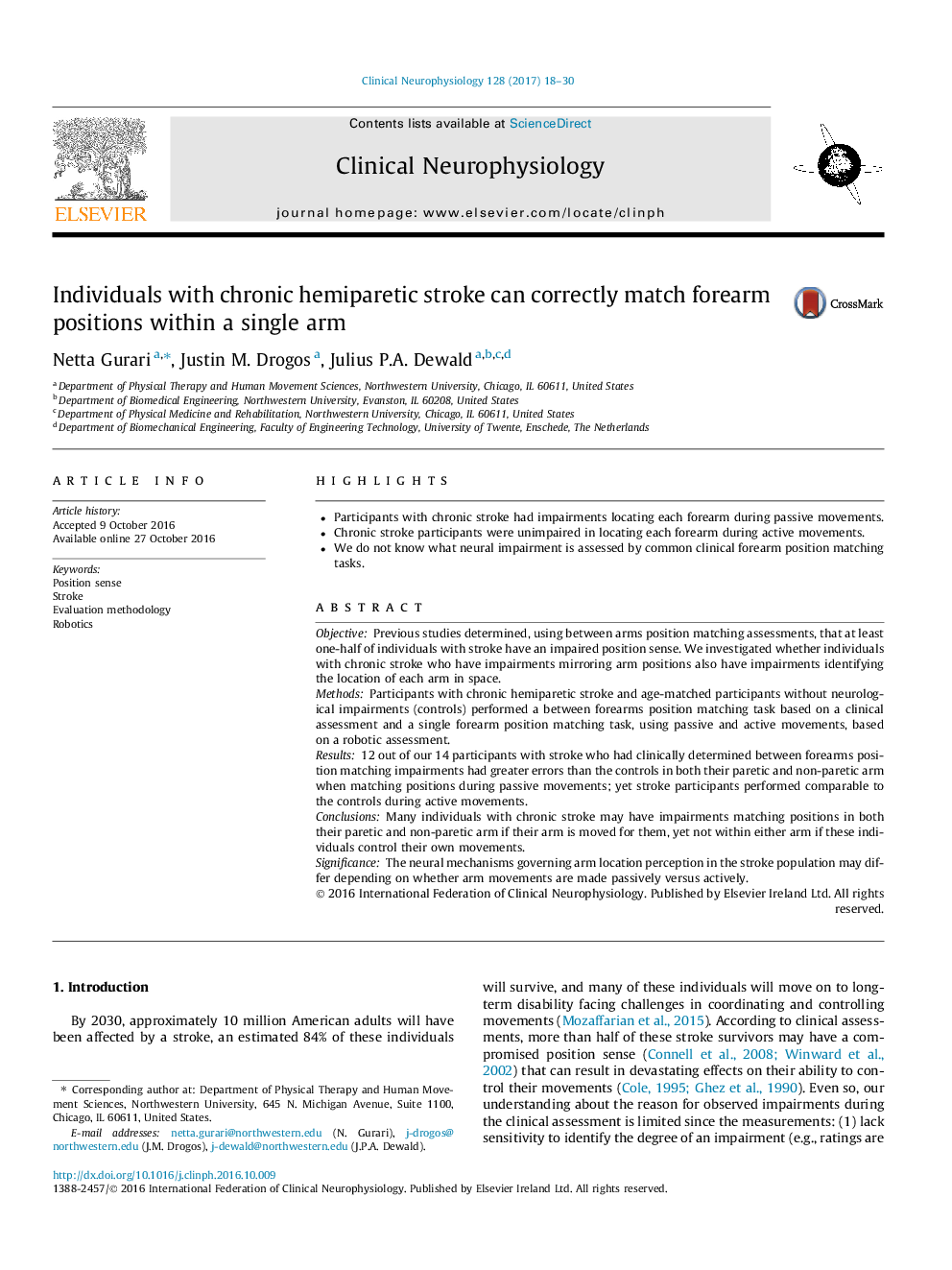| Article ID | Journal | Published Year | Pages | File Type |
|---|---|---|---|---|
| 5627451 | Clinical Neurophysiology | 2017 | 13 Pages |
â¢Participants with chronic stroke had impairments locating each forearm during passive movements.â¢Chronic stroke participants were unimpaired in locating each forearm during active movements.â¢We do not know what neural impairment is assessed by common clinical forearm position matching tasks.
ObjectivePrevious studies determined, using between arms position matching assessments, that at least one-half of individuals with stroke have an impaired position sense. We investigated whether individuals with chronic stroke who have impairments mirroring arm positions also have impairments identifying the location of each arm in space.MethodsParticipants with chronic hemiparetic stroke and age-matched participants without neurological impairments (controls) performed a between forearms position matching task based on a clinical assessment and a single forearm position matching task, using passive and active movements, based on a robotic assessment.Results12 out of our 14 participants with stroke who had clinically determined between forearms position matching impairments had greater errors than the controls in both their paretic and non-paretic arm when matching positions during passive movements; yet stroke participants performed comparable to the controls during active movements.ConclusionsMany individuals with chronic stroke may have impairments matching positions in both their paretic and non-paretic arm if their arm is moved for them, yet not within either arm if these individuals control their own movements.SignificanceThe neural mechanisms governing arm location perception in the stroke population may differ depending on whether arm movements are made passively versus actively.
